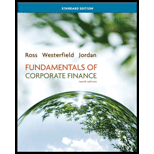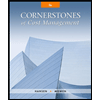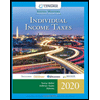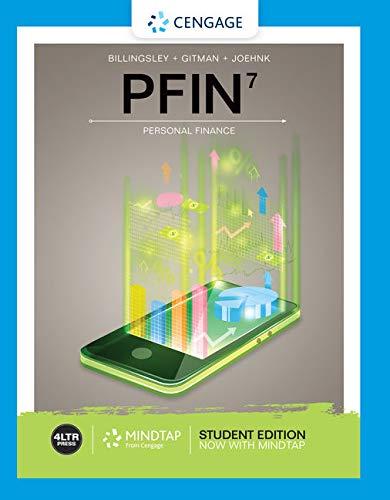
Case summary:
Company S hired Person X. Person X accepted the job because he felt that the company had a good potential growth. At the end of the first day, Person C met Person X and introduced him to the 401(k) plan. It is a retirement plan that the companies offer to their employees.
The employee has to contribute money from his pre-tax income to the 401(k) plan. The company would also contribute a maximum of 5 percent of the salary to the plan. The plan has the following options for investments:
- 1. Investment in company stock
- 2. Investment in B “S and P” 500 index fund
- 3. Investment in B small-cap fund
- 4. Investment in B large-company stocks fund
- 5. Investment in B Bond fund
- 6. Investment in B
money market fund
Characters in the case:
- Company S: The recruiter
- Person X: The new employee
- Person C: The employee of Company S working in Finance section of the company
To determine: The advantages and disadvantages of choosing the B large-company stocks fund over the B “S and P” 500 index fund.
Introduction:
Mutual fund refers to the investment in a group or portfolio of assets.
Want to see the full answer?
Check out a sample textbook solution
Chapter 12 Solutions
Fundamentals of Corporate Finance Standard Edition
- What does the internal rate of return (IRR) tell you about a potential investment?arrow_forwardExplain the difference between systematic risk and unsystematic risk. Which one can be diversified away?arrow_forwardWhat is the formula for calculating the present value of a future cash flow, and why is discounting used in finance?arrow_forward
- What is the formula for calculating the present value of a future cash flow, and why is discounting used in finance? Explaarrow_forwardExplain the difference between systematic risk and unsystematic risk. How can an investor reduce unsystematic risk in their portfolio?need help!arrow_forwardExplain the difference between systematic risk and unsystematic risk. How can an investor reduce unsystematic risk in their portfolio?arrow_forward
- A firm has a project with an initial investment of $100,000 and cash inflows of $30,000 per year for 5 years. If the firm’s required rate of return is 10%, should the project be accepted based on its net present value (NPV)? Need helparrow_forwardA firm has a project with an initial investment of $100,000 and cash inflows of $30,000 per year for 5 years. If the firm’s required rate of return is 10%, should the project be accepted based on its net present value (NPV)?arrow_forwardDefine capital structure. What are the main factors that influence a company's decision on how much debt versus equity to use? Exparrow_forward
- Define capital structure. What are the main factors that influence a company's decision on how much debt versus equity to use?arrow_forwardAns A company has a beta of 1.2, the risk-free rate is 3%, and the expected market return is 8%. Using the Capital Asset Pricing Model (CAPM), calculate the expected return on the company's stock. Need help !!!arrow_forwardA company has a beta of 1.2, the risk-free rate is 3%, and the expected market return is 8%. Using the Capital Asset Pricing Model (CAPM), calculate the expected return on the company's stock.arrow_forward
 Cornerstones of Cost Management (Cornerstones Ser...AccountingISBN:9781305970663Author:Don R. Hansen, Maryanne M. MowenPublisher:Cengage Learning
Cornerstones of Cost Management (Cornerstones Ser...AccountingISBN:9781305970663Author:Don R. Hansen, Maryanne M. MowenPublisher:Cengage Learning Individual Income TaxesAccountingISBN:9780357109731Author:HoffmanPublisher:CENGAGE LEARNING - CONSIGNMENT
Individual Income TaxesAccountingISBN:9780357109731Author:HoffmanPublisher:CENGAGE LEARNING - CONSIGNMENT Pfin (with Mindtap, 1 Term Printed Access Card) (...FinanceISBN:9780357033609Author:Randall Billingsley, Lawrence J. Gitman, Michael D. JoehnkPublisher:Cengage Learning
Pfin (with Mindtap, 1 Term Printed Access Card) (...FinanceISBN:9780357033609Author:Randall Billingsley, Lawrence J. Gitman, Michael D. JoehnkPublisher:Cengage Learning





